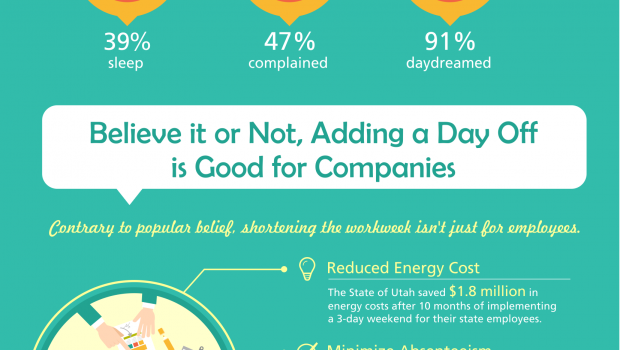Why Every Weekend Should Be A 3 Day Weekend, According To Science [Infographic]
As a culture, the United States invests a lot of time and energy into our physical health. While certainly not a bad thing, we often seem to neglect the equally important component of a healthy emotional and mental state as well.
A huge contributor to the chronic emotional stress and mental fatigue our culture experiences actually hides in a socially accepted standard, that of the 40-hour workweek. 40 hours a week has long been commonly accepted as full-time work. As if that’s not enough, among full-time employees in the U.S., the average worker actually works even more than the 40-hour standard. A few hours of overtime here and there can’t hurt, right? Averaging 50 to 60 hours per week, most full-time employees know full well how much that can hurt. Not exactly something most employers want to mention on a benefits package.
Recent studies prove that accepted standard not only wrong, but so wrong that even the typical 40 hours contributes to the chronic fatigue and mental exhaustion. Nearly every worker in America knows the feeling of making it to the last day of their workweek and having every fiber of their being dragging along as they force themselves to make it through that last, painful day.
Believe it or not, reducing the average workweek by one extra day, cutting hours worked to 32, has shown itself to increase efficiency and productivity, as well as focus and morale, to the point that more work gets done by many employees in 32 hours than many others manage in 60. Not benefit enough? Throw in the fact that this practice creates the near-mythical 3-day weekend, every single week, and it’s remarkable that it has taken so long for our corporate culture to realize that overworking employees does not equal more work done. Happier employees also means higher retention rates and less sick days. Keeping employees around until retirement has all sorts of benefits for a smart company.
Take a look at this infographic to see some of the many benefits your company might be missing from this surprising change in the old-fashioned standard.
















